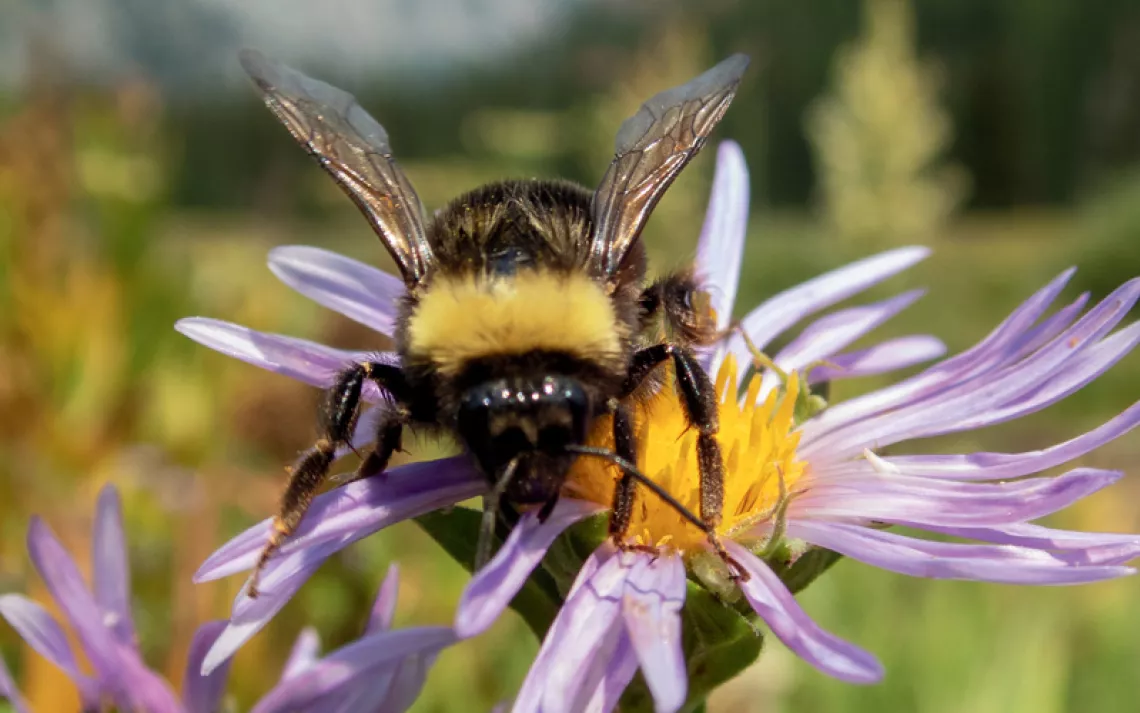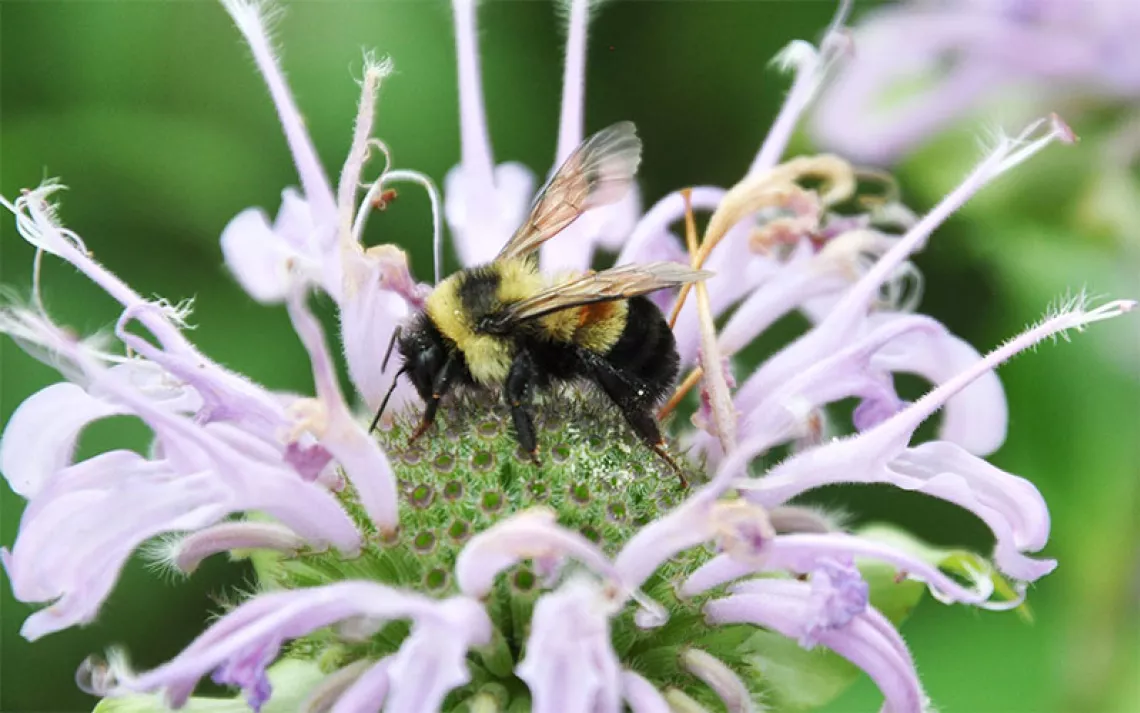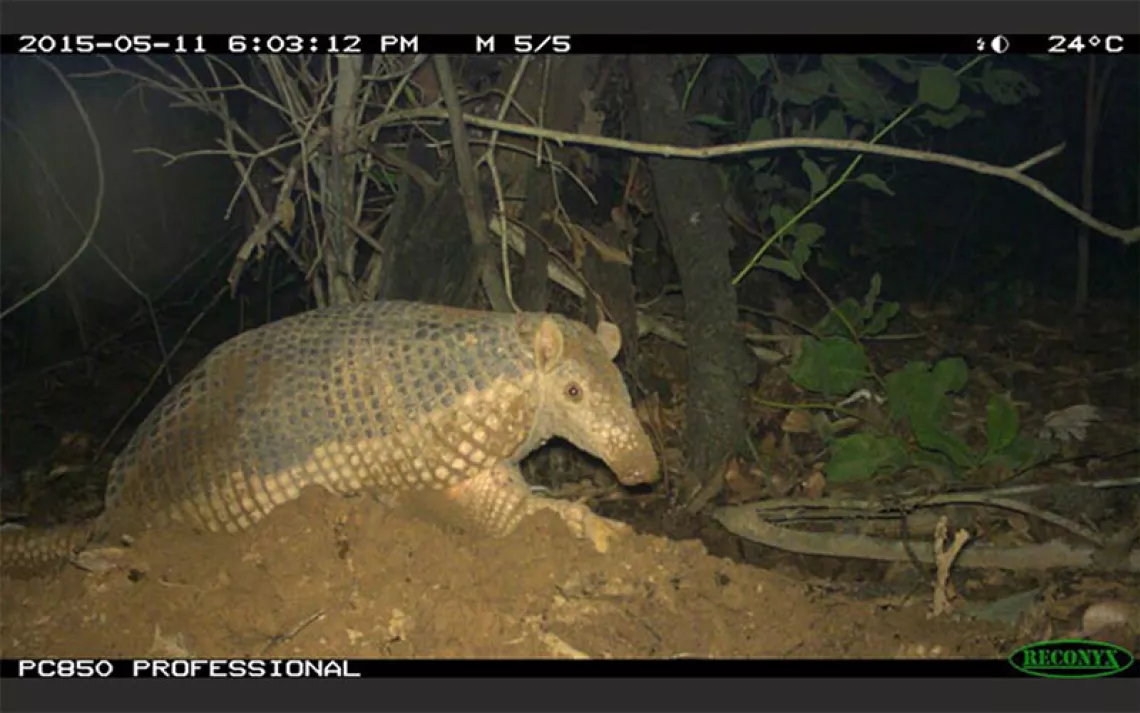Community Science Ignites Hope for Bumble Bee Conservation
Local conservationists are collecting important data that help researchers and land managers protect the bees
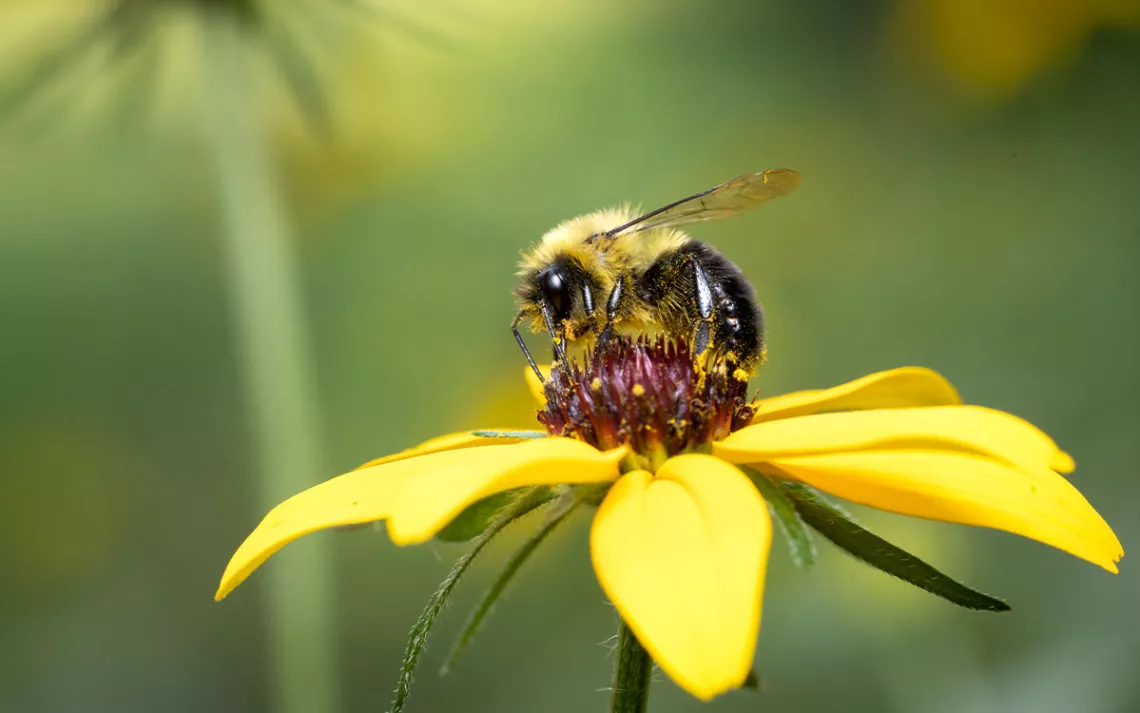
“There’s one!” Armed with a digital camera and telephoto lens, Bob Plamann quickly snapped some photos of a small, fuzzy insect flitting across a field of wildflowers. He had found and photographed an endangered rusty patched bumble bee.
On a sweltering summer day last year, Plamann was one of several volunteers searching for the elusive bee in a conservancy near Madison, Wisconsin. His wife, Judy Cardin, had just taught participants how to identify rusty patched bumble bees, and the group was thrilled with their discovery. When the couple went home, they submitted Plamann’s photos to the Wisconsin Bumble Bee Brigade, a community science program run by the Wisconsin Department of Natural Resources. Their goal: to help scientists and land managers map the distribution and plant preferences of bumble bees throughout the state.
Bumble bees in North America are declining rapidly due to habitat loss, pesticides, pathogens, and climate change. According to the Xerces Society for Invertebrate Conservation, 28 percent of all North American bumble bees are now at risk of extinction. This includes the rusty patched bumble bee photographed by Plamann, which became the first bumble bee species listed under the Endangered Species Act in 2017.
While bumble bees are essential pollinators for many wild plants and agricultural crops, data is often lacking on their ranges, population sizes, and basic natural history, making conservation efforts difficult. To help gather necessary data, numerous community science programs (also known as citizen science or participatory science programs), such as the Wisconsin Bumble Bee Brigade, Bumble Bee Watch, and Bumble Bee Atlas, have sprung up across North America over the last decade. These programs recruit volunteers to submit photos of bumble bees they’ve observed. Experts validate the submissions, and the data is used by researchers and land managers to track and conserve bumble bee populations.
Interest in these programs is booming. When Wisconsin began its Bumble Bee Brigade program in 2018, Jay Watson, a conservation biologist at the Wisconsin Department of Natural Resources, thought they might get 10 people interested. To date, they’ve had over 300 volunteers submit photos of bumble bees from across the state. “It really exceeded way beyond my wildest expectations of success,” says Watson.
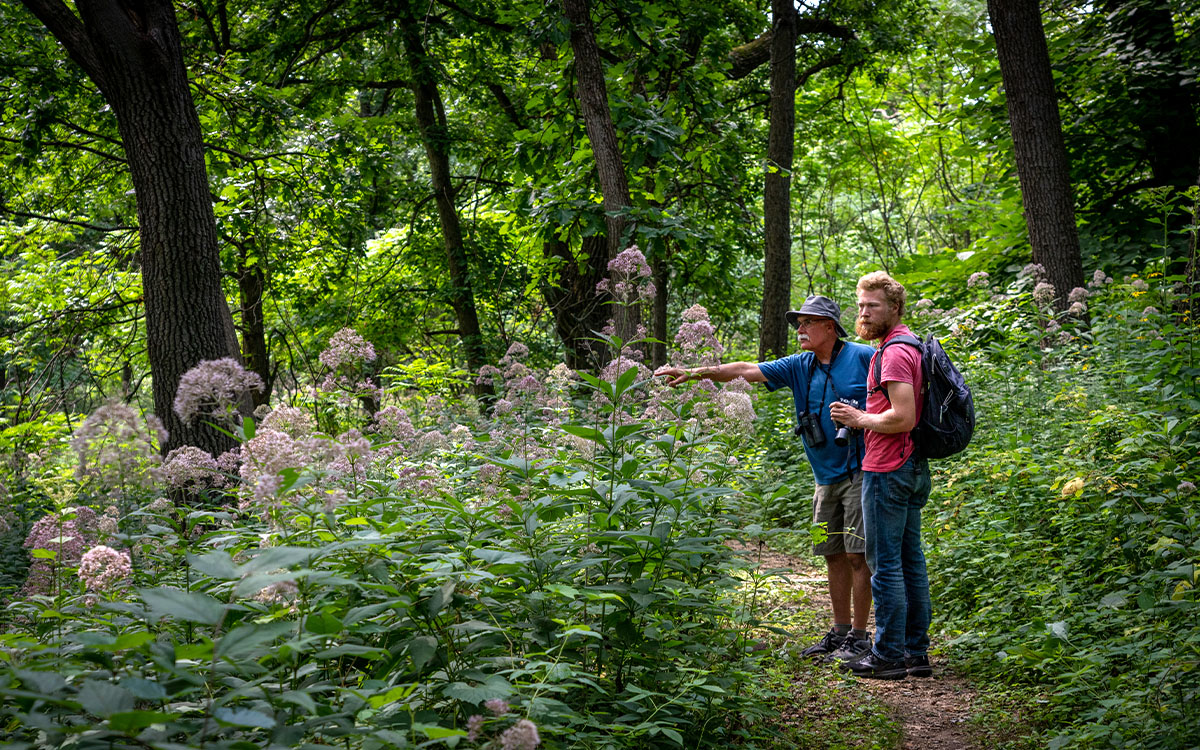
Bumble Bee Watch, a national program, has also been a soaring success since its launch in 2014. “We have over 100,000 people registered for Bumble Bee Watch,” notes Rich Hatfield, a senior endangered species conservation biologist at the Xerces Society. That number includes 4,000 people across 20 states who participate in the Bumble Bee Atlas, a program created in 2018 to complement Bumble Bee Watch. The Bumble Bee Atlas focuses on regions outside urban settings where a significant portion of the Bumble Bee Watch data is collected. “The goal of the Atlas program is to get people outside of those towns, cities, and transportation corridors and help us understand how bumble bees are faring in our natural areas,” says Hatfield.
A recent research study led by Victoria MacPhail, a former PhD student at York University, confirms the value of bumble bee community science programs. MacPhail was involved in the launch of Bumble Bee Watch a decade ago. She saw some of the first records submitted and felt the thrill when a rare species was identified. “I could see the diversity of species being found and the abundance of records and I wanted to see if this is actually making a difference,” she explains.
MacPhail compared photo data submitted by community scientists in Bumble Bee Watch with data collected by experts using traditional methods. She found that while the number of community science records were lower than those collected by experts, they provided important ecological data, including information on new plants that bumble bees were foraging on. They also identified new bumble bee populations and expanded the known ranges of several species, including some at risk of extinction, thus filling gaps left by traditional methods.
“One of my findings was that a quarter of all [bumble bee] records in the last decade came from citizen scientists,” says MacPhail. Importantly, these volunteers are also finding populations of bumble bees that scientists didn’t previously know existed, she says. “People literally are finding rare species in their backyards, as well as parks and natural areas.”
Community science is important since researchers need data but can’t be everywhere at once, stresses MacPhail. Teams of volunteers can cover more ground and the data they collect is being used by experts to conserve bumble bees, she adds.

Sign up to receive Sierra News & Views
Get articles like this one sent directly to your inbox weekly.
With this action you affirm you want to receive Sierra Club communications and may vote on policy designated by the Sierra Club Board.
John Mola, an assistant professor at Colorado State University, has experienced the value of bumble bee community science programs firsthand. Earlier this year, Mola and colleagues published the first range-wide genetics study of the rusty patched bumble bee. For the study, they non-lethally collected tissue samples from nearly 500 rusty patched bumble bees across several states—a remarkable feat given the bee’s endangered status. Mola credits their success in finding the bees to community science programs. “The reason we knew where to look, and where to collect this species from is because so many people are engaged with recording their observations of bumble bees to programs like Bumble Bee Brigade, a Wisconsin program, or Bumble Bee Atlas,” he explains.
Experts stress that community science is not only a boon to researchers, but it’s also fun and rewarding for volunteers. It engages people in science, educates them about the natural world, and involves them in conservation efforts. Cardin and Plamann share this sentiment. After retiring in 2018, the couple felt disheartened by the state of the environment and started looking for ways to make a positive impact. They began volunteering for the Wisconsin Bumble Bee Brigade. It didn’t take long for them to get hooked.
When Cardin and Plamann first started with the Brigade, they were submitting bumble bee photos taken primarily from their garden and around town. Fast forward six years, and they now help run the program. Cardin verifies most of the approximately 6,000 bee sightings submitted through the Brigade website annually, runs educational events, and oversees a related bumble bee observer Facebook page. Plamann, who Cardin affectionately calls “the Indiana Jones of Bumble Bees,” travels across the state searching for rare bumble bees in rural swamps, bogs, and wetlands choked with brambles and teeming with mosquitoes. “It’s in those kinds of areas that we need Indiana Jones, not with his whip but with his camera,” says Cardin.
The couple’s interest in bumble bee conservation has also led to changes at home. Since joining the Wisconsin Bumble Bee Brigade, they have transformed their traditional yard into a wilder landscape bursting with native wildflowers that bloom from spring through fall, rich with leaf litter, and dotted with stacks of dead wood, creating a perfect sanctuary for bumble bees to feed, nest, and hibernate. Cardin explains that with their kids grown, they don’t need a sprawling lawn to play badminton anymore and have decided to create habitat for bumble bees instead.
Bumble bee conservation has become a full-time retirement career for the couple, especially during the summer, but it’s clearly a labor of love. “We might be working harder now than we were when we were working,” says Cardin, but “we’re doing what we love, and we’re passionate about it.”
 The Magazine of The Sierra Club
The Magazine of The Sierra Club

